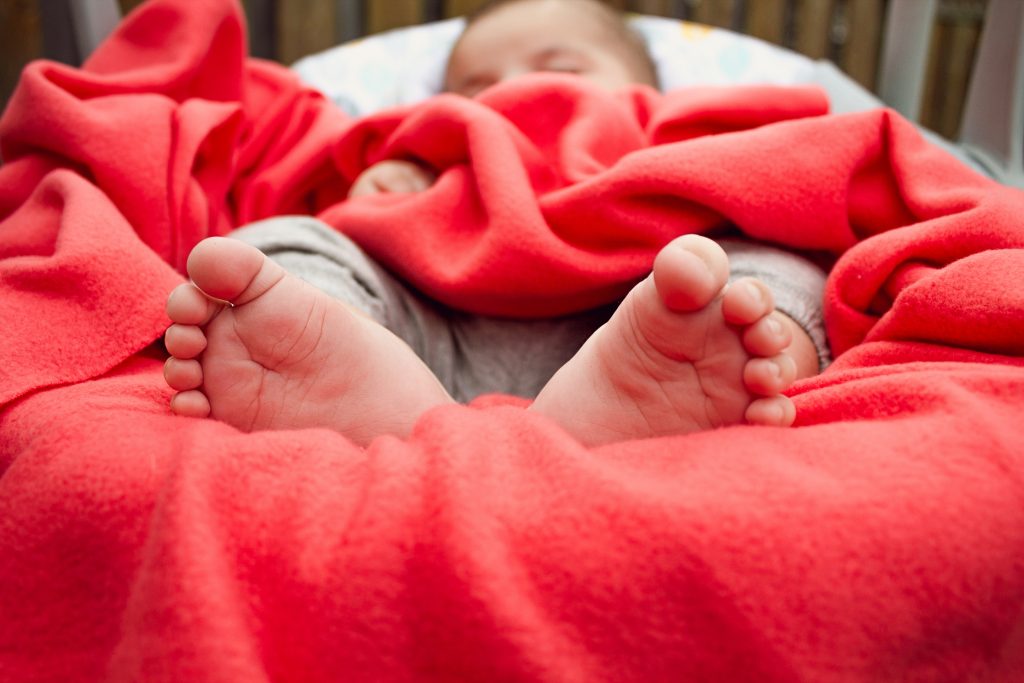My Baby Nursery is committed to researching the top products for you to buy. Some external links are affiliate links, and we may earn a commission on items you buy (at no extra cost to you).
As a new parent, one of the most challenging things is knowing your baby's cues, such as when they are hungry, tired, unwell, their temperature is too high or too low, and so on. Identifying whether your infant is too chilly can be one of those more ambiguous situations. Oftentimes, the warning indicators aren't as evident as you might assume.
Whether it's freezing cold or sweltering hot outside, deciding what temperature to set a thermostat at can be a challenge. How warm does a baby's nursery need to be while it's snowing or under freezing outside? When the temperature outside is already in the 90s, how cold should it be inside? How can you know if your baby is too hot or cold?
Babies can't express their discomfort verbally, but this guide could indeed help you figure out how to keep the baby and his room at the ideal temperature.
How many times do you adjust your outerwear throughout the day? I suspect you do it automatically. Keeping your body temperature stable is as automatic as breathing. You take off an item of clothing as you warm up, then you put on another as the temperature drops. To put it simply, if you are an adult, it's simple.
In contrast, infants are unable to do this. They'll be grateful if you keep a check on their temps and make sure they stay comfortable. The statement holds both and during the day night.
So, how can you tell if your infant is too cold? When sleeping, what temperature is best for infants? Let's investigate these issues and more.
Looking for blankets for baby cot? Look no further. My Baby Nursery has you covered.
WHAT CONSTITUTES TOO COLD?
According to American Academy of Pediatrics, a healthy infant's internal temperature should be between 97.5 and 100.4 farenheit (AAP).
Your baby's energy levels will drop because her body will have to fight harder to keep a temperature of 97.5 degrees or below. infants born prematurely or with a low birth weight are more likely to become chilled rapidly. If your infant's temperature drops below 95 degrees Fahrenheit, hypothermia may set in. Get in touch with your child's paediatrician or rush him or her to the nearest emergency facility right away.
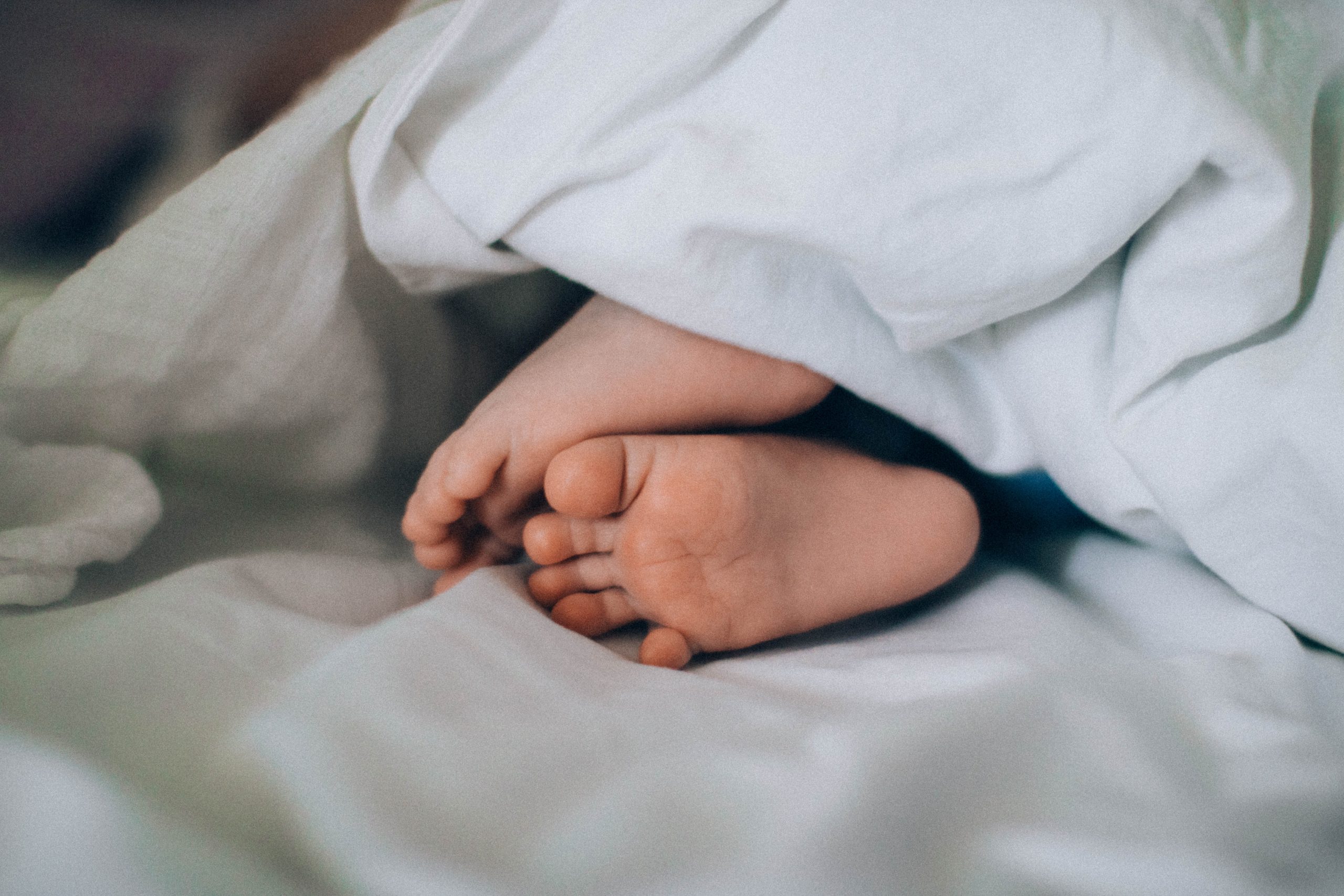
COLD SYMPTOMS IN A BABY
Your kid may be too cold if you notice any of these indicators.
Try touching the baby's skin to see whether it feels unusually cold. Be wary of relying just on the sensation of his limbs, as babies' undeveloped circulatory systems cause their fingers and toes to be noticeably cooler than the rest of their bodies. Instead, use the fingertips of your hand to feel for tender spots on his stomach and back. In addition to a general lack of colour in the baby's skin and lips, you should be on the lookout for signs of illness such irritability, poor eating, and decreased activity..
TAKING THE INFANT'S TEMPERATURE
Using a thermometer is the only surefire way to tell if your infant is suffering from hypothermia. To get the best reliable reading of a child's temperature, the AAP suggests taking it from the child's rectal cavity if he or she is younger than three years old. The American Academy of Pediatrics (AAP) suggests putting a dab of petroleum jelly or another lubricant on the tip of a sterile digital multiuse thermometer before taking a rectal temperature. You can either face your infant across your lap and bring his legs up to his chest. The thermometer should be inserted no deeper than just an inch into to the anus and allowed to beep before being removed and the reading taken. While a rectal thermometer will give you the most precise reading, the Mayo Clinic says it's safe to take a baby's temperature under the armpit once they reach three months old.
To take your baby's temperature, just put the digital device in his or her dry armpit. Make him keep his arm still until the thermometer beeps.
WARMING UP THE BABY
A temperature of less than 97.5 degrees Fahrenheit warrants a visit to the physician, who may advise you to seek emergency care if the case warrants it.
Your baby's temperature may be just below 97.5 degrees Fahrenheit, in which case your paediatrician may suggest warming your infant at home. North Carolina's Healthy Start Foundation suggests aiming for a comfortable temperature of 62°F to 72°F. Get window insulation & insulated curtains if the nursery is draughty. Swaddling your baby in a thin cotton blanket or putting him or her in just one foot sleeper or sleeping sack is a safe way to keep them warm without exposing them to the risk of suffocation. Lightweight hats can be used to prevent heat loss, but should not be worn while your infant is asleep due to the risk of suffocation should the hat slip down over her face. If your baby is feeling chilly, you can quickly warm her up by wearing her close to your body in a sling.
WHAT TEMPERATURE SHOULD MY BABY HAVE?
A rectal reading (the most precise way to take baby's temperature) from 98 and 100.3 degree Temps indicates that your baby is healthy; a temperature of 100.4 ℉ or higher indicates that your baby has a fever.
Talk to your paediatrician if your baby's temperature is above or below the normal range, especially if accompanying symptoms such as a blocked nose, sore throat, or cough persist.
Temperatures measured under the arm are typically 1–2 degrees lower than those taken in the rectal cavity, and those taken in the mouth using a pacifier thermometer are typically 0.5–1 degrees lower than those obtained in the rectal cavity. If your infant has a rectal temperature of 100.4 ℉ or greater, you should contact your paediatrician right once.
WHAT IS THE IDEAL TEMPERATURE FOR A BABY'S ROOM?
If you're trying to decide how warm or cool to make your baby's nursery, keep Goldilocks in mind. Whether you find the room to be too cold or too hot, chances are good that your kid will, too.
However, whether it's summer or winter, a temperature of 68 to 72 degrees Fahrenheit is optimal. Too much heat in the room has been shown to raise the risk of sudden infant death syndrome, while too little warmth can cause your baby to wake up from the cold unnecessarily.
Avoid putting any supplemental heating or cooling units in your child's room. However, fans can indeed be helpful for air circulation and have been demonstrated to lessen the risk of sudden infant death syndrome (SIDS).
Since premature infants have more difficulty maintaining a consistent body temperature, you may find that raising the thermostat to roughly 72 degrees Fahrenheit in the initial weeks after bringing your baby from the hospital home is necessary.
Weight gain is critical for the health of premature infants, and if they are too chilly, they may burn too many calories attempting to warm up.
WHAT SHOULD I WEAR FOR THE WEATHER WITH MY BABY?
Think in terms of layers when deciding how to outfit your kid for varying temperatures. The best approach to warm up or cool down infant is to add or remove clothing.
Hats are wonderful accessories because they insulate the infant from the cold and shield them from the heat of the sun.
Babies may need an extra layer or two when it's cold outside; make sure you're quick to remove extra layers when you come back in so that baby doesn't overheat.
WHAT EXACTLY IS TOG?
Thermolite (TOG) is a measure of thermal performance that can be used to textiles such as clothes and blankets. If the tog rating is higher, then means the clothing is more effective at trapping body heat. (A summertime clothing with a 1 TOG rating is typical.)
Although the name was coined in Britain in the 1940s, it has since caught on elsewhere, and it is now beginning to appear on American product labels for swaddles, duvets, and other bedding items.
Currently, there are no recommendations for the ideal TOG for baby clothing and blankets in the United States from the American Academy of Pediatrics. Still, lightweight garments can range from .3 to .5 TOG, whereas heavier ones can reach 2.5 TOG.
Best Baby Swaddle Bags on Amazon
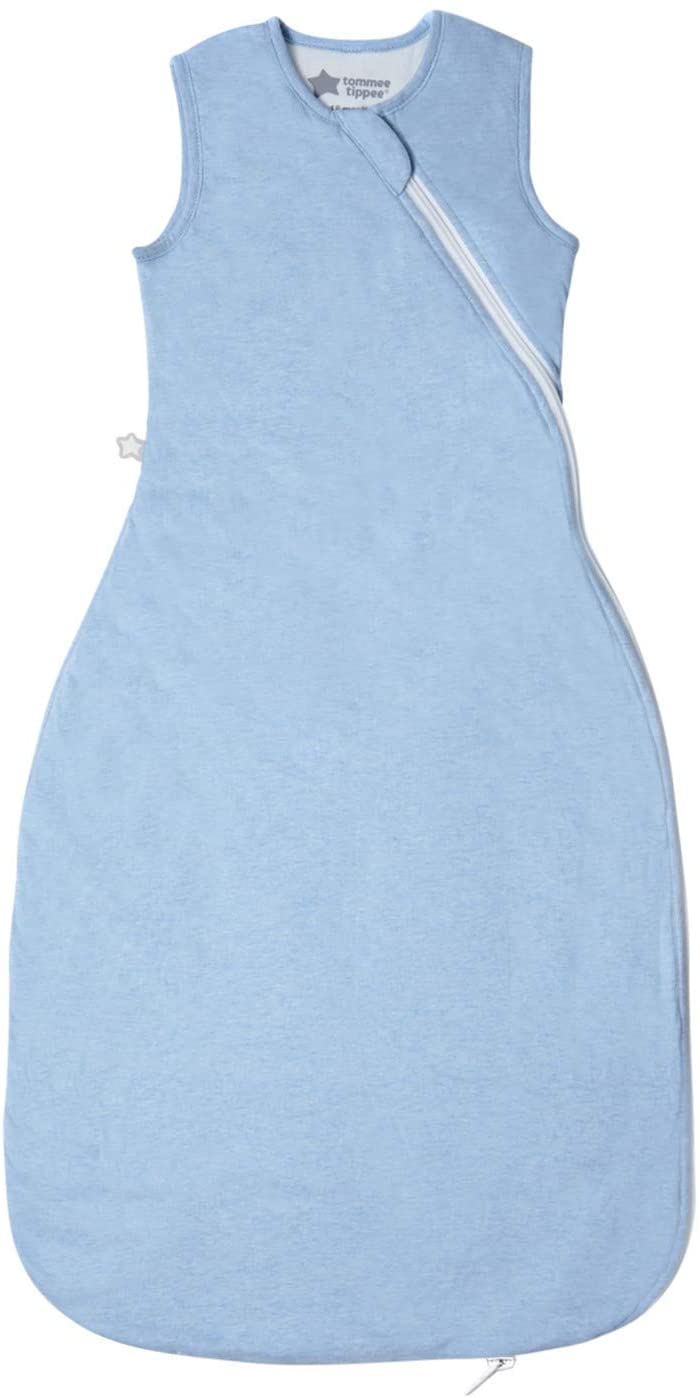
Tommee Tippee
GroBag Baby Sleeping Bag
This sleep bag is made from super-soft, cotton-rich, fluorescent-free that’s soft and gentle on baby’s skin and perfect for a comfortable night’s sleep.
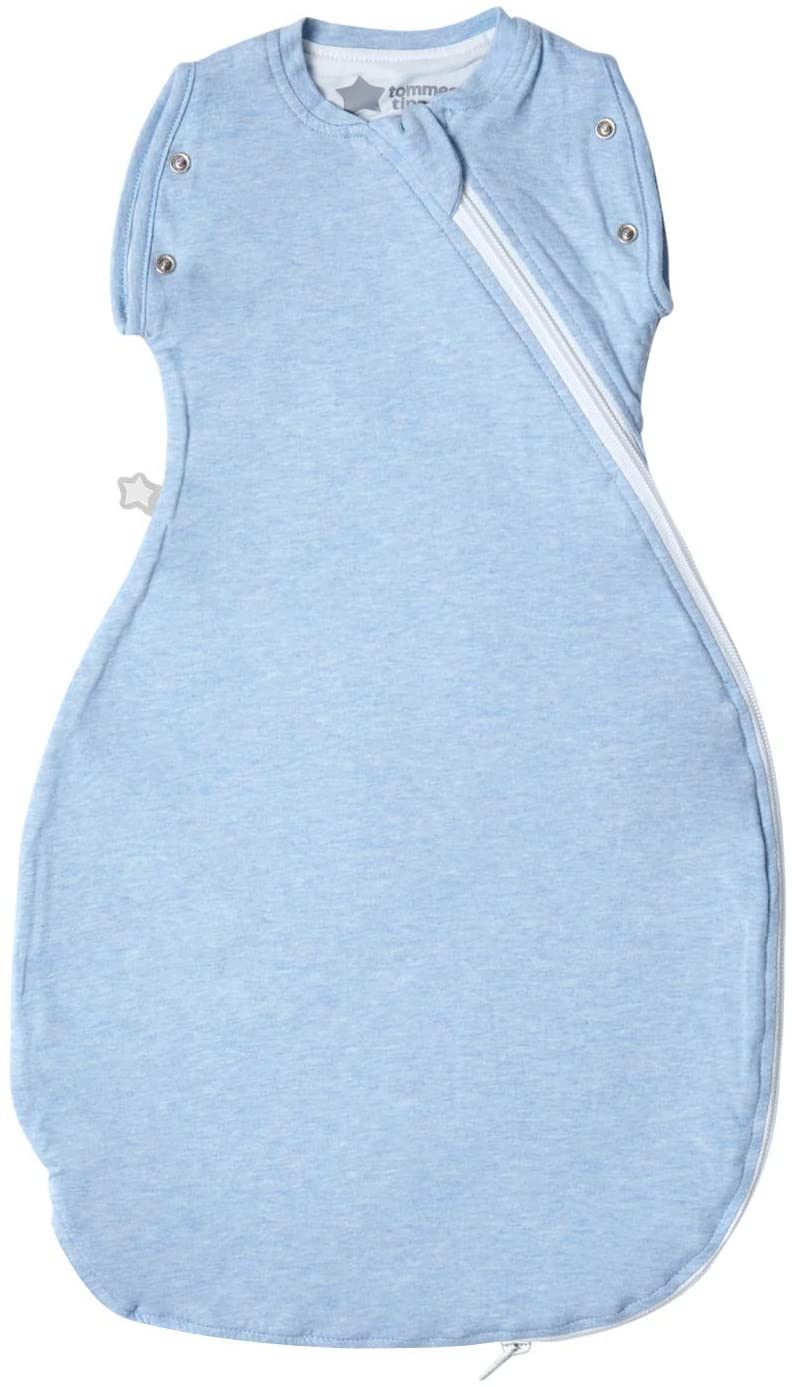
Tommee Tippee
GroBag Baby Snuggle Transition Sleeping Bag
With the Blue Marl Snuggle you have the best of two worlds! Arms in for a swaddle or arms out for a newborn sleep bag.
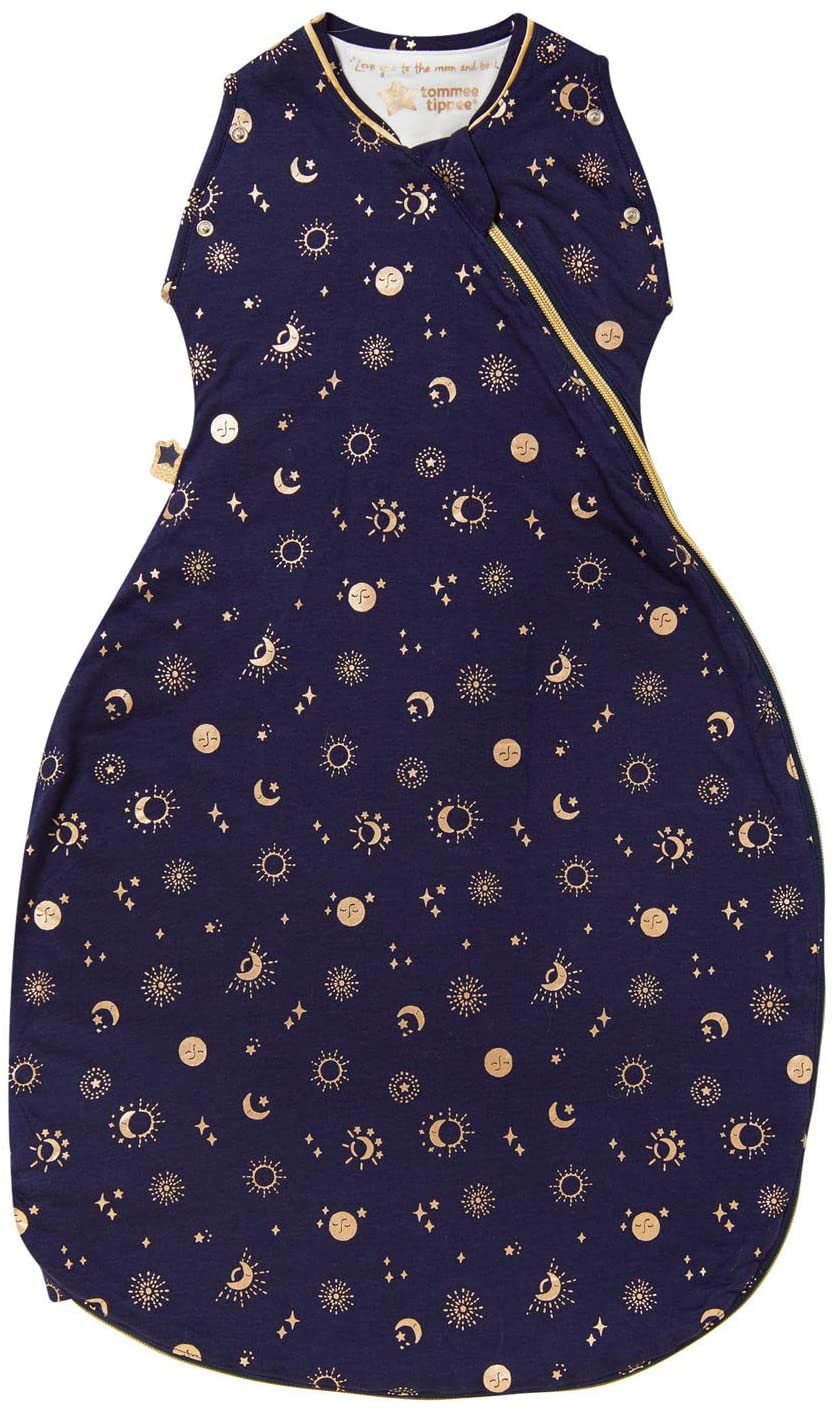
Tommee Tippee
GroBag Baby Snuggle Transition Sleeping Bag - Bamboo Rick Fabric with Aloekind
This easy to use snuggle allows you to swaddle your baby with arms tucked in for total snugness or arms out, making it perfect for transitioning baby from swaddles to baby sleep bags
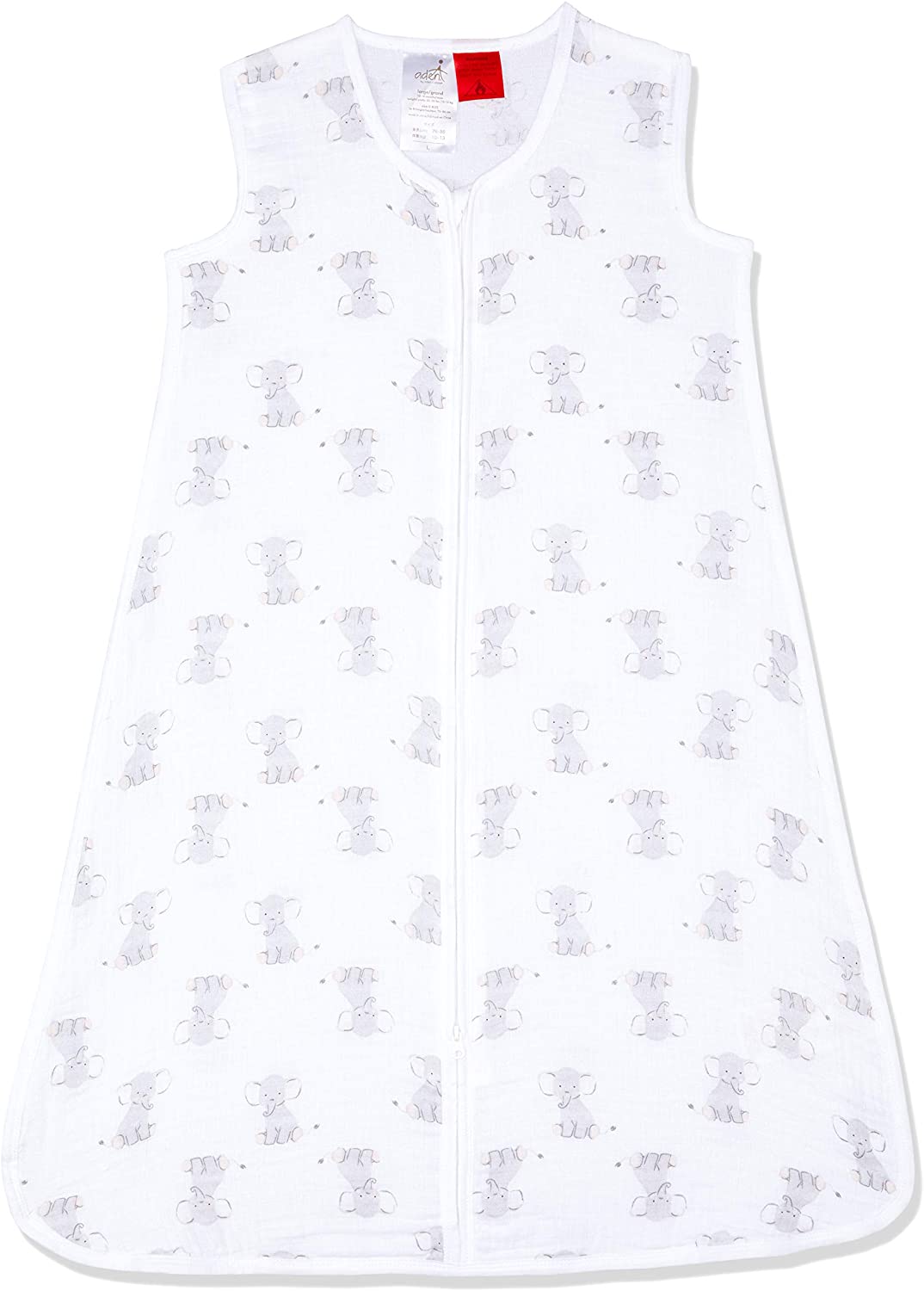
Aden By Aden and Anais
Safari Babes Muslin Sleeping Bag
There's no need to stress over loose blankets in the crib with our breathable classic sleeping bag. Impossible for little legs to kick off, the wearable blanket slips over your baby's pj's and zips open from the bottom, making stealth nighttime changes a cinch.
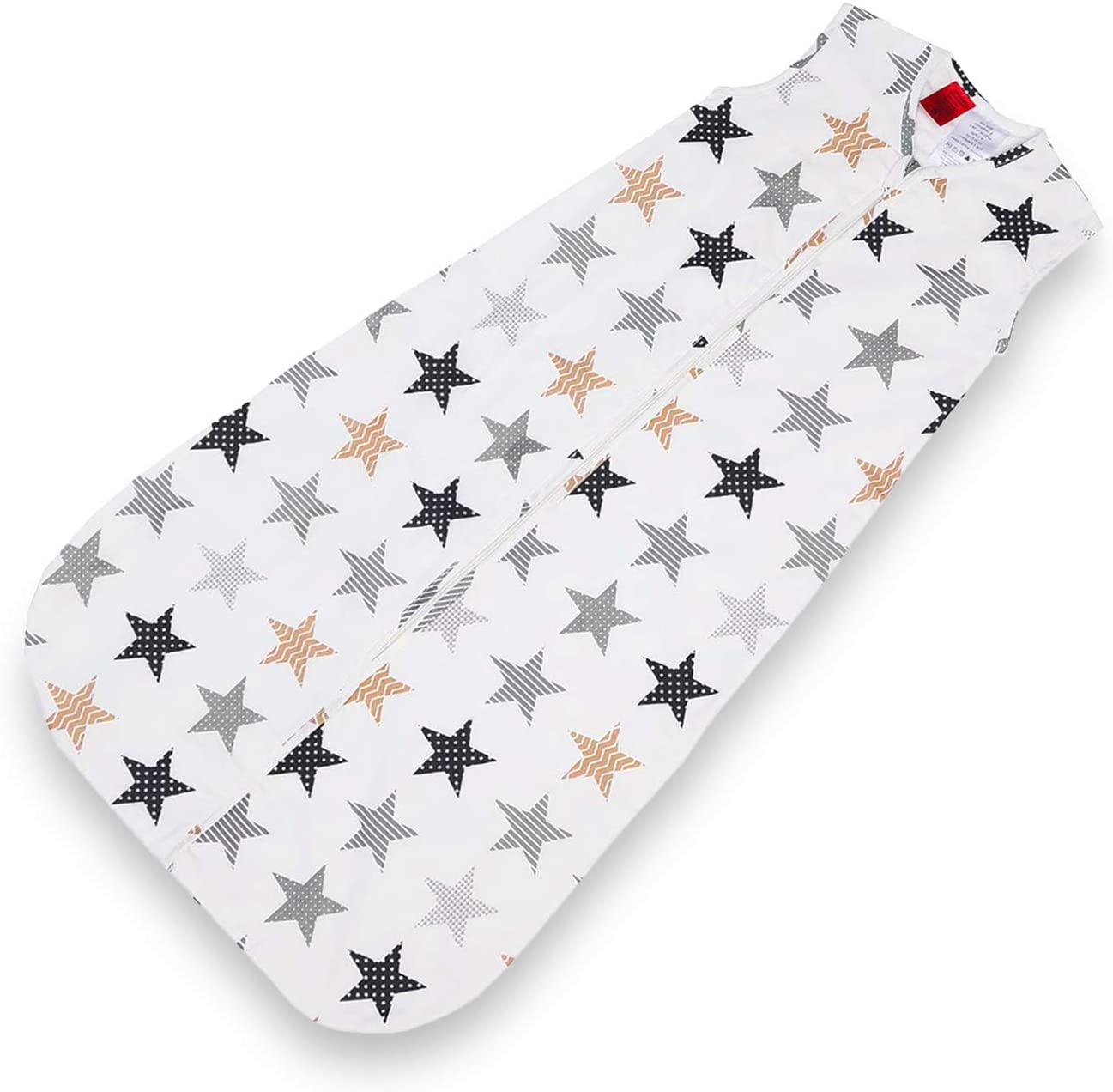
Lullaby Lane
Baby Sleeping Bag - 1 TOG Baby Sleep Sack - Stars
The Lullaby Lane Baby Sleeping bag is a lightweight sleeveless wearable blanket featuring a downward zipper for easy middle-of-the-night diaper changes. Keep your baby both safe and snug to ensure a peaceful night’s sleep.
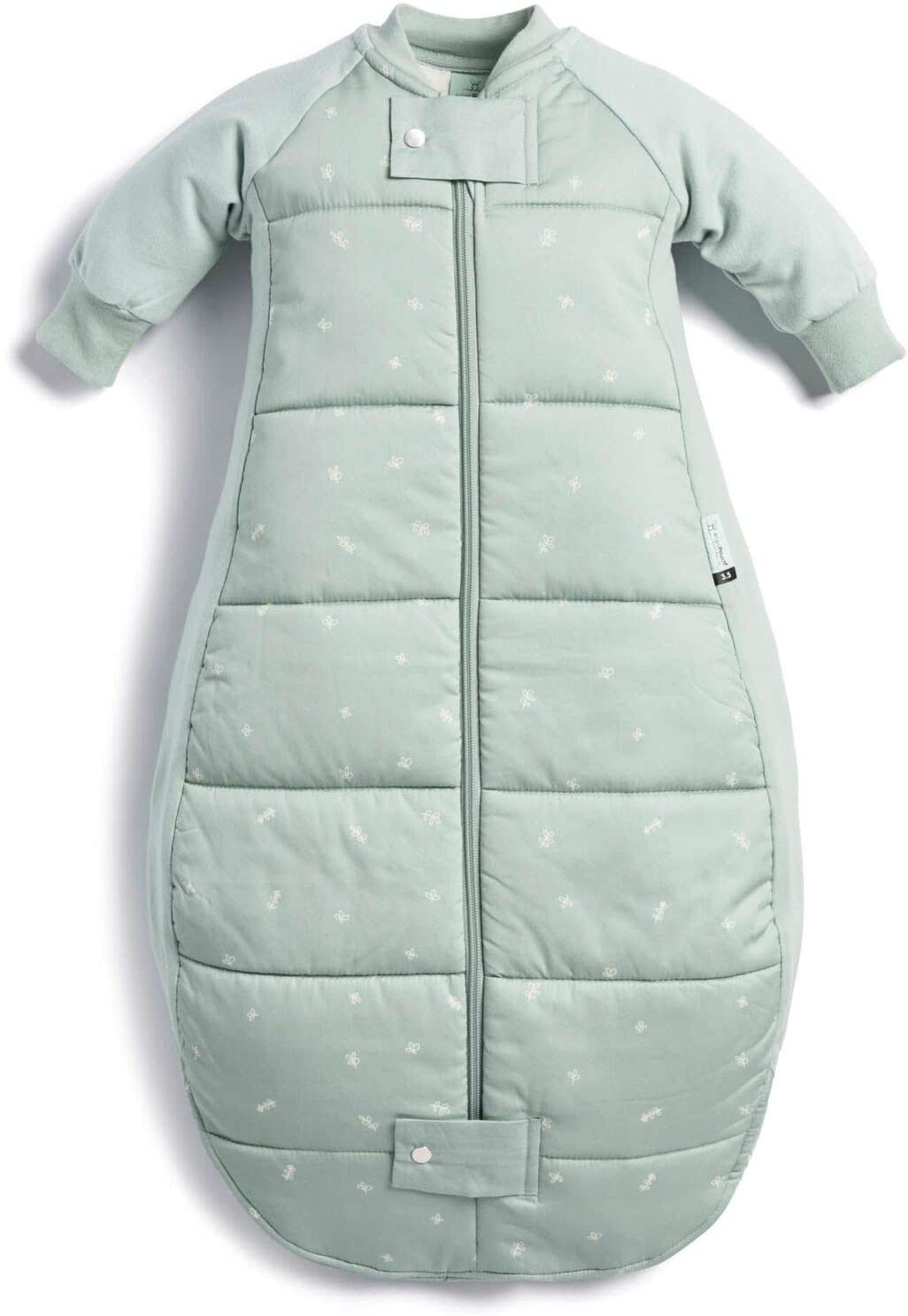
ergoPouch
Organic Cotton Sheeting Sleeping Bag
The award-winning Sleep Suit Bag converts from a Sleeping Bag to a Sleep Suit with legs using the 4-way zippers. The 400 thread count organic cotton outer has a silky smooth feel, and is made from an easy-care woven cotton fabric, similar to the feel of a flat sheet on your own bed. The stretchy side and shoulder panels are made from organic jersey cotton and ergonomically designed to allow your little one to move freely and prevent getting tangled during sleep.
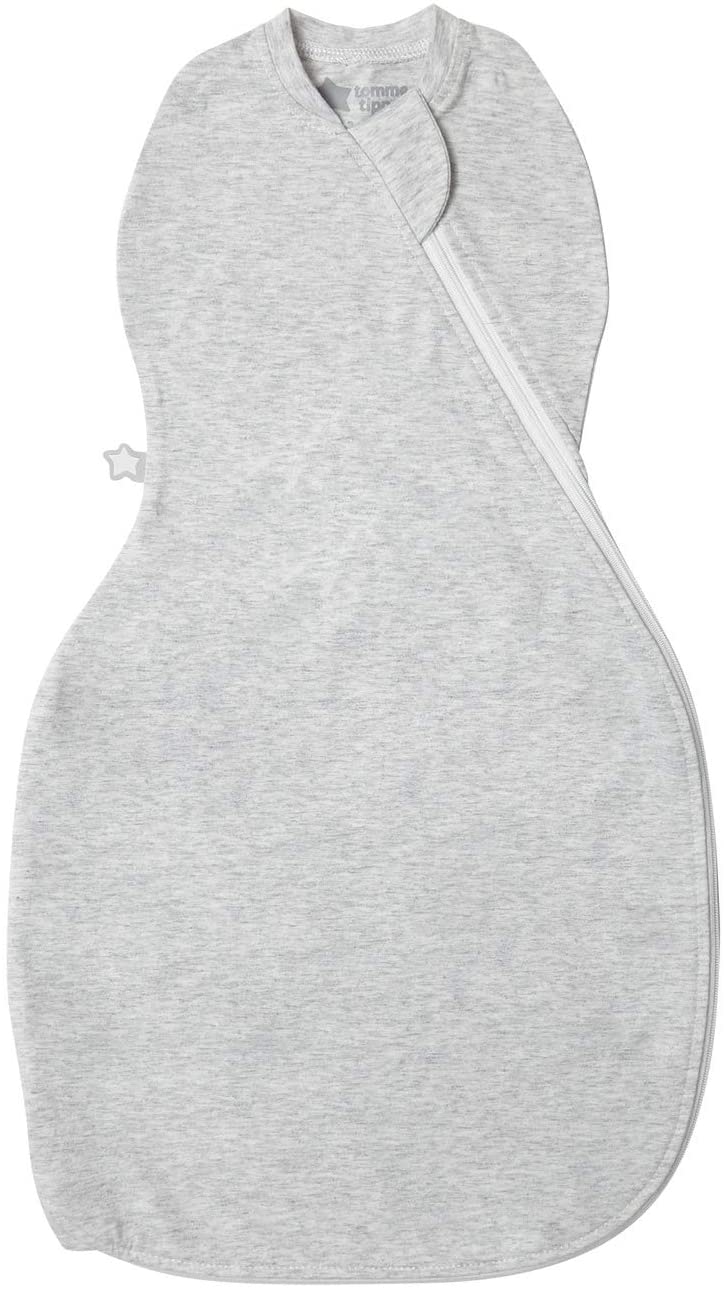
Tommee Tippee
Grobag Newborn Sleep Easy Swaddle
The Easy Swaddle is specially designed with your baby’s hips in mind – their little legs will fall into a natural hip-healthy position that encourages strong growth.
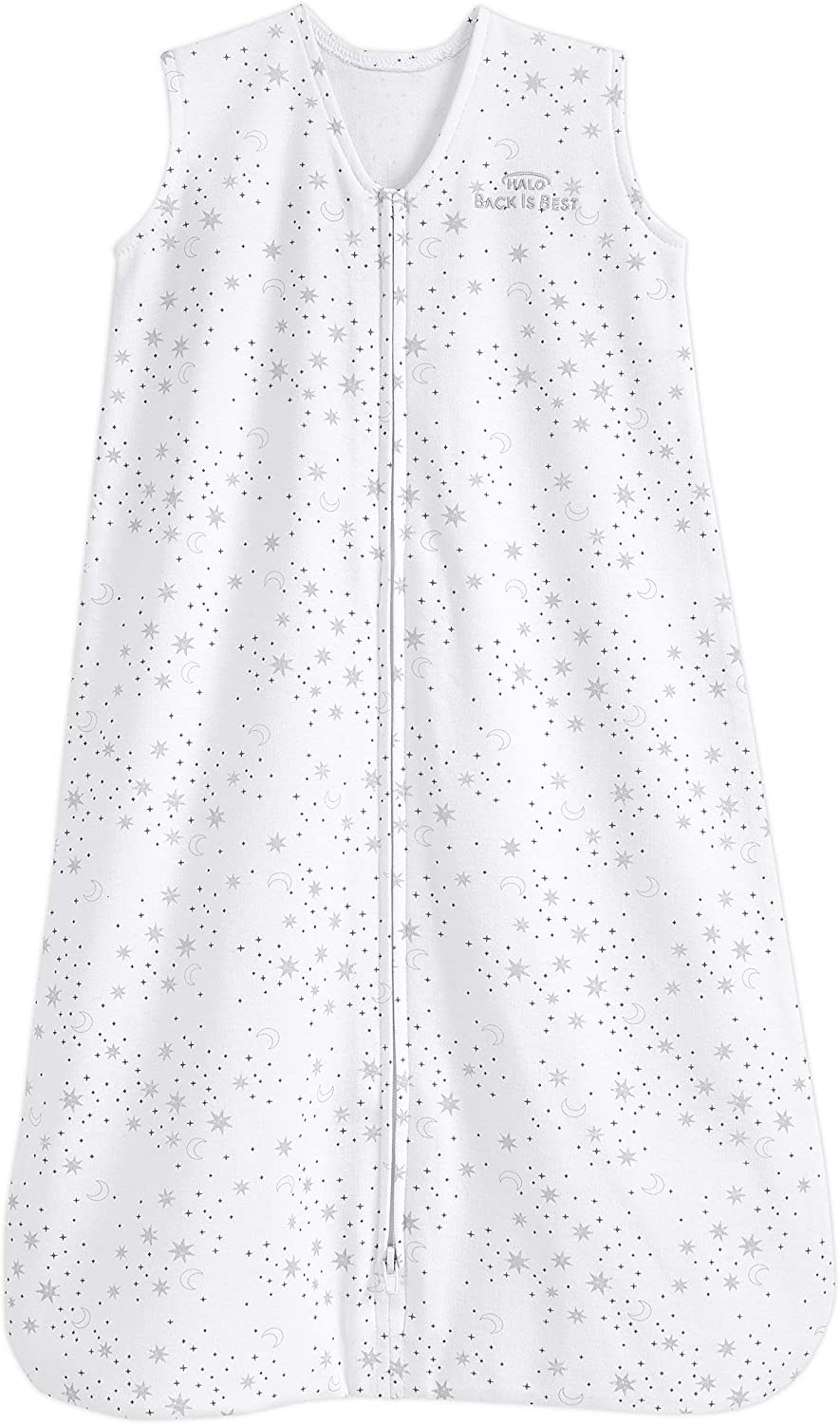
HALO
Sleep Sleepsack® Sleeping Bag
HALO® SleepSack® swaddle is the only 3-way baby swaddle that adjusts to fit baby's sleep style. Swaddle with arms in, hands-to-face, or with one or both arms out to ensure baby’s best sleep. With adjustable fasteners for a perfect fit, it nestles baby like a soft blanket without the risk of sleep-related dangers—so baby can sleep both comfortably and safely.
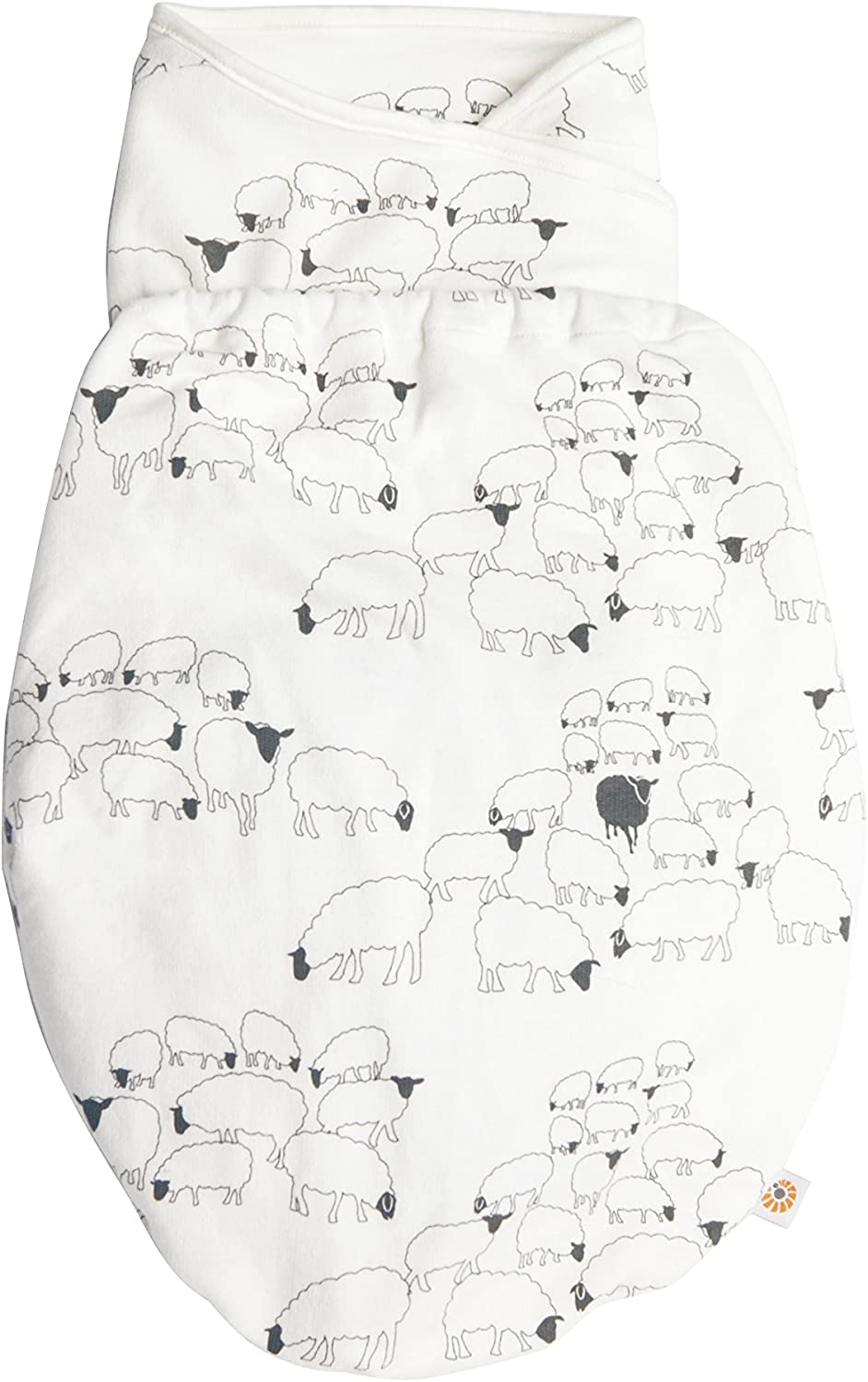
Ergobaby
Swaddle Wrap Sheep Sleeping Bag with Hip Positioner and Arm Pouches, Swaddle Blanket
The Ergobaby Swaddler is the safe, easy and effective way to keep your baby sleeping longer and more peacefully. The well thought-out, simple-to-use design is ergonomic, and your baby will be swaddled safely and comfortably. Recommended by mothers and doctors in equal measures, the innovative features of the Ergobaby Swaddler help to prevent your baby from waking up through nervous movements, while the ergonomic design helps your baby’s hips and legs to move naturally, as advised by the International Hip Dysplasia Institute.
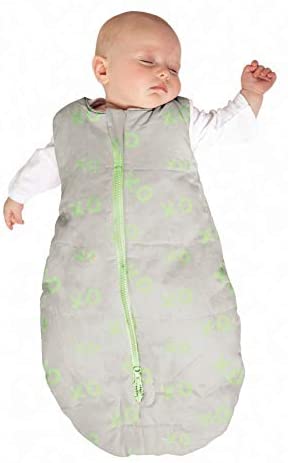
Baby Studio
My First 2.5 Tog XO Cotton Studio Bag
Sleeping made safe stylish and multifunctional Baby Studio "Studio Bag" has been designed as a safe sleep alternative for the child who kicks their blankets off in the middle of the night and rolls around a gets wrapped up in the excess material.
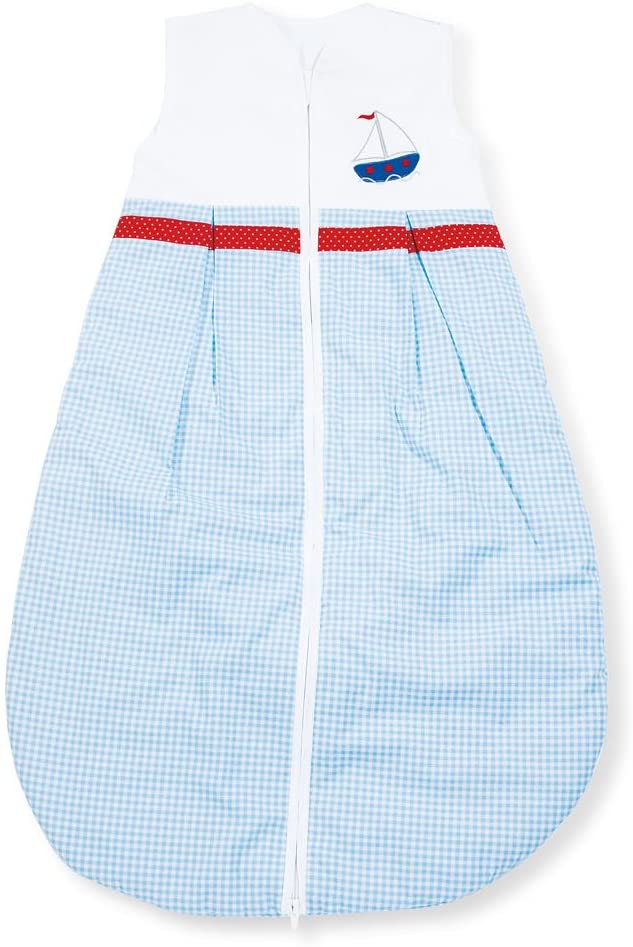
Pinolino
Winter Sleeping Bag
To prevent the winter sleeping bag zippers disturb while sleeping, the full-length zipper can be opened from bottom to top. The chin guard at the neckline covers the zipper and thus protects against the risk of jamming.
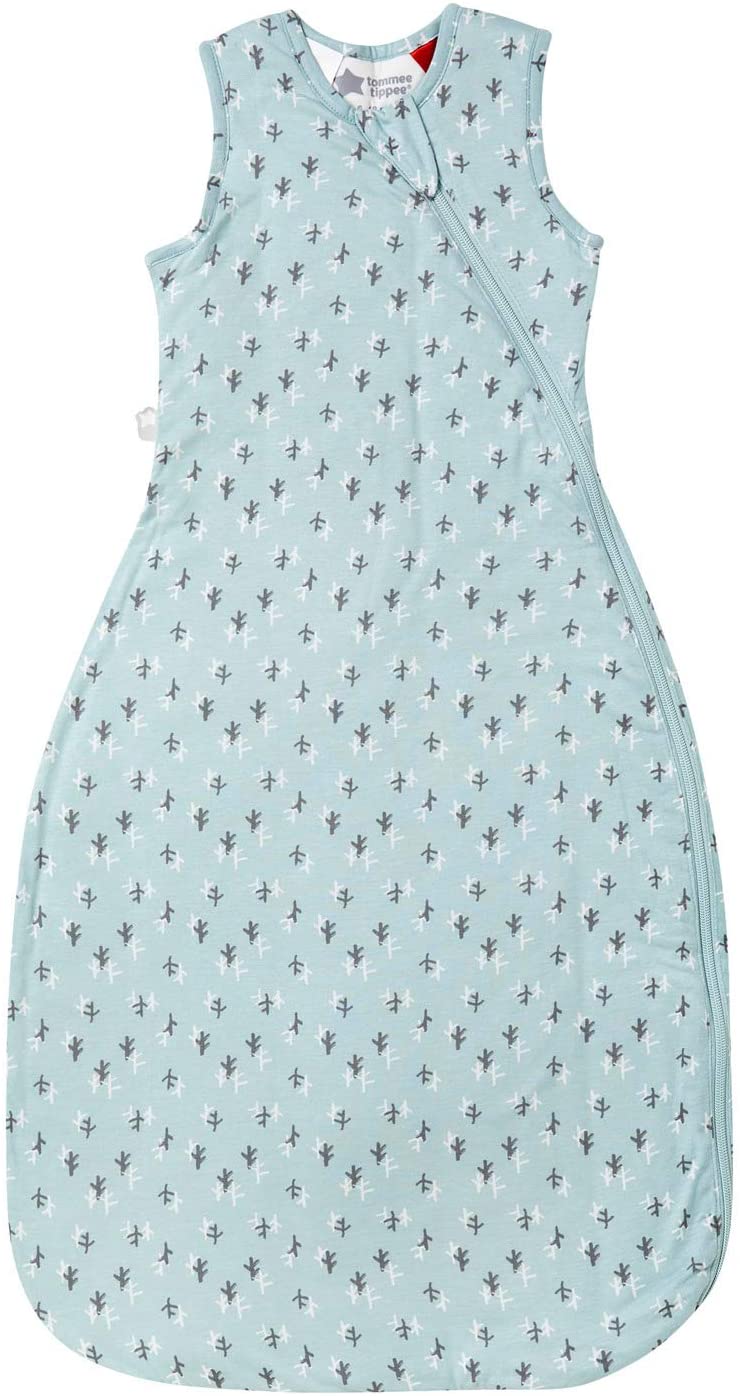
TOMMEE TIPPEE
GroBag Baby Sleeping Bag 2.5 Tog
Baby sleep bags are especially useful to help those wriggly little ones regulate their temperature while sleeping by making sure there are no baby blankets or sheets for them to kick off. Both comfy and secure, our sleep bag supports babies (and parents), to create a cozy and sound night’s sleep. Made from super-soft, machine-washable cotton, with easy zip access for nappy changes, it’s designed to keep your baby sleeping soundly.
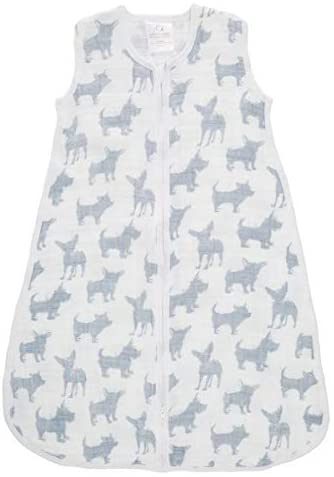
Aden + Anais
Waverly 1 TOG Waverly Classic Sleeping Bag
There's no need to stress over loose blankets in the crib with our breathable classic sleeping bag. Impossible for little legs to kick off, the wearable blanket slips over your baby's pj's and zips open from the bottom, making stealth nighttime changes a cinch. Plus, the 100 % cotton muslin is pre-washed so it's super soft from the start and stays that way wash after wash.
IS MY BABY ACTING NORMALLY?
Babies have to expend both supply of oxygen to warm themselves up when they are chilly. Keep your baby at a comfortable temperature so they can store energy and gain weight for optimal growth and development. A baby's temperament improves, sleep duration increases, and weight gain slows or stops altogether if the parent does not pay close attention to the baby's temperature. When infants are unwell, born prematurely, or have a low birth weight, this is of paramount importance.
Infants who display typical baby behaviour are probably not excessively chilly. Your baby's behaviour is something you should pay close attention to. Is your infant behaving like a typical infant in that he or she is feeding, sleeping, crying, etc.? If this is the case, then it's likely that your newborn is healthy. In any case, if you're worried, it's best to consult a doctor.
We have the best range of baby nursery blankets to keep your baby just right day and night.
IS MY INFANT OVERHEATING?
It's easy to get carried away while clothing a baby for sleep, leading to inadvertent overheating. Babies are more likely to suffer from sudden infant death syndrome if they are overheated. Sweat, a flushed face, and fast breathing are all indicators of hyperthermia in a baby. Your infant's health is vulnerable to the dangers of overheating.
You may assist prevent overheating by only dressing your infant in loose, breathable clothing made from natural materials. Swap out the polar fleece pyjamas for some made from cotton or wool and you have a baby sleeping sack. You should also make sure that the baby's undergarments, such as a onesie or pyjamas, are made of natural textiles like cotton rather than polyester. Oftentimes, manufacturers may add polyester to cotton fabrics, therefore it is important to read labels.
ALWAYS DOUBLE-CHECK
If you're worried that your infant could be overheated, feel his or her chest, head, and neck for signs of moisture. Your youngster is overheated and sweating if you find them drenched. If your baby's breast is warm, as was said before, this is a symptom that they are overheated. As a parent, you should also monitor your child's vital signs by listening to her breathing or watching her chest rise and fall. Overheating symptoms include rapid breathing. It has been hypothesised that overheating may contribute to sudden infant death syndrome. Simply put, Sudden Infant Death Syndrome is the inability of a baby to wake up when there is anything else medically wrong with the baby. The likelihood that your infant may not wake up if something is wrong increases as room temperature rises, according to research.
EVIDENCE OF SIDS
In her work, Gwen Dewar discusses relevant scientific topics "Exactly what is sudden infant death syndrome? This article provides an overview of a scientifically-minded parent from 2009-2014 ". ** It appears that when the brain is overheated, it has more difficulty waking up. Infants may be less likely to wake up in a warmer room than in a cooler one.
The cooler the environment, the more likely it is that your kid may awaken and cry if something goes wrong while he or she is sleeping. Keep an eye out for indicators of overheating and act quickly to cool down your infant. If your baby gets ill, you may need to do this. A doctor's care is in order.
HOW CAN I ENSURE THAT MY BABY IS SLEEPING AT THE PROPER TEMPERATURE?
Babies should be placed to sleep on their backs, with their faces and heads exposed, for maximum safety. Babies can quickly overheat if their heads are covered, but they can shed a lot of heat via their skulls. Using a baby back pack is the safest approach to prevent your child from getting too hot or suffocating on blankets. There is no need for loose blankets that could accidentally cover baby's face while using a Bubbaroo baby sleep bag because of the large openings at the armpits. If your infant seems to be getting too hot, try taking off part of their clothing and/or bedding. If your infant is ill, a doctor's advice may be in order.
WHAT TO AVOID
Remove your baby's hat or hat if you plan on putting him or her to bed immediately upon returning from an outing. The risk of overheating is much greater than the risk of waking the infant. Never put a baby to sleep with an electric blanket, wheat bag, or hot water bottle. The baby's crib should be placed far away from any heat sources, such as radiators. You shouldn't use bumpers on your child's crib since they block the mattress's ventilation.
BABY SWADDLING
Newborns and babies not yet rolling independently can be swaddled should make them feel secure and at ease till their initial surprise wears off. However, you should end swaddling before your infant can roll over onto their stomach.
Do you need to bring blankets, sleep sacks, socks, and caps when you go to bed or take a nap?
Swaddling your infant is easy with a sleep sack, and you may wear it over a sleeper. While swaddling blankets can be used for the same purpose, sleep sacks are often more convenient for parents.
Wearing a hat or socks to bed with your child is not a good idea because it can get too warm. Make sure there are no extra blankets, toys, or pillows in the crib when laying your baby down for naps or night, as these can all raise the risk of sudden infant death syndrome.
WHAT IS THE IDEAL TEMPERATURE FOR A SICK BABY?
Although a colder temperature may be preferable when your infant has a blocked nose and is having problems breathing, it is better to keep the nursery at a constant temperature.
Lighter, more breathable fabrics are preferable when your child has a fever and is sweating profusely.
HOW CAN I KNOW IF A BABY IS OVERHEATING OR UNDERHEATING?
If you feel the back of your baby's neck and it's either sweaty or cold, you'll know that your child is either too hot or cold.
When infants are overheated, they may appear to be sweating and have red cheeks. A baby's breathing rate may also increase if it's hot. The infant may appear less active and get cold feet and hands if the room temperature is too low.
WHAT ARE THE HAZARDS OF THE BABY BECOMING OVERHEATED OR UNDERHEATED?
Overheated infants can become irritable and fussy, and some may even acquire a fever. Overheating can lead to heat stroke in extreme circumstances.
If your infant appears to be warm, you should offer cool water (not ice water) and gradually begin to remove clothing. Immediately contact a paediatrician if he does not show signs of improvement.
Babies can become less receptive when the temperature is too low. Get in touch with your child's physician or other healthcare expert right once if you notice that he or she is unusually chilly to the touch and unresponsive.
My Baby Nursery has a wide range of baby cot nursery blankets to choose from.
IS IT TRUE THAT MY NEWBORN NEED MORE LAYERS THAN I DO?
Yes, newborn babies usually need The colder it is, the more layers you should wear outside, and the more you should wear at night. The trick is to build in layers that can be peeled off easily. Again, remember that your infant can easily overheat, so once you're inside, you should remove some of their outerwear.
Keep in mind that your baby will naturally feel warmer if you do, and if you're cold, your baby should be too. Your infant generally won't be able to tell you whether he's too hot or cold, but he'll let you know by fussing.
Best to avoid that altogether by following these tips to make sure your baby is dressed right — no matter what the weather is like outside.
Keeping your baby warm at night will provide for a better night's sleep for your infant and less waking up during the night. Keeping in mind how unpleasant it is to feel cold when sleeping, it stands to reason that babies may wake up more frequently if their resting environment is too cool.
Conclusion
Identifying whether your baby is too hot or cold can be a tricky task. Oftentimes, the warning indicators aren't as evident as you might assume. A healthy infant's internal temperature should be between 97.5 and 100.4 farenheit (AAP). Using a thermometer is the only surefire way to tell if your infant is suffering from hypothermia. The American Academy of Pediatrics suggests putting a dab of petroleum jelly or another lubricant on the tip of a sterile digital multiuse thermometer before taking a baby's temperature.
Talk to your paediatrician if your baby's temperature is above or below the normal range. North Carolina's Healthy Start Foundation suggests aiming for a comfortable 62°F to 72°F. Swaddling your baby in a thin cotton blanket or putting him or her in a sleeping sack is a safe way to keep them warm. Weight gain is critical for the health of premature infants, and if they are too chilly, they may burn too many calories attempting to warm themselves up. The best approach to warm up or cool down infant is to add or remove clothing - think in terms of layers.
It's easy to get carried away while clothing a baby for sleep, leading to inadvertent overheating. Babies are more likely to suffer from sudden infant death syndrome if they are overheated. Sweat, flushed face and fast breathing are all indicators of hyperthermia in a baby. It appears that when the brain is overheated, it has more difficulty waking up. Infants may be less likely to wake up in a warmer room than in a cooler one.
Babies should be placed to sleep on their backs, with their faces and heads exposed for maximum safety. Swaddling your infant is easy with a sleep sack, and you may wear it over a sleeper. Make sure there are no extra blankets, toys, or pillows in the crib when laying your baby down for naps or night - these can all raise the risk of sudden infant death syndrome. Babies can become less receptive when the temperature is too low. Overheating can lead to heat stroke in extreme circumstances. If your infant appears to be warm, you should offer cool water (not ice water) Immediately contact a paediatrician if he does not show signs of improvement.
Content Summary:
- As a new parent, one of the most challenging things is knowing your baby's cues, such as when they are hungry, tired, unwell, their temperature is too high or too low, and so on.
- Identifying whether your infant is too chilly can be one of those more ambiguous situations.
- Oftentimes, the warning indicators aren't as evident as you might assume.
- Whether it's freezing cold or sweltering hot outside, deciding what temperature to set a thermostat at can be a challenge.
- How warm does a baby's nursery need to be while it's snowing or under freezing outside?
- How can you know if your baby is too hot or cold?Babies can't express their discomfort verbally, but this guide could indeed help you figure out how to keep the baby and his room at the ideal temperature.
- Keeping your body temperature stable is as automatic as breathing.
- To put it simply, if you are an adult, it's simple.
- They'll be grateful if you keep a check on their temps and make sure they stay comfortable.
- So, how can you tell if your infant is too cold?
- When sleeping, what temperature is best for infants?
- According to American Academy of Pediatrics, a healthy infant's internal temperature should be between 97.5 and 100.4 farenheit (AAP).Your baby's energy levels will drop because her body will have to fight harder to keep a temperature of 97.5 degrees or below.
- Try touching the baby's skin to see whether it feels unusually cold.
- Instead, use the fingertips of your hand to feel for tender spots on his stomach and back.
- In addition to a general lack of colour in the baby's skin and lips, you should be on the lookout for signs of illness such irritability, poor eating, and decreased activity.
- Using a thermometer is the only surefire way to tell if your infant is suffering from hypothermia.
- To get the best reliable reading of a child's temperature, the AAP suggests taking it from the child's rectal cavity if he or she is younger than three years old.
- The American Academy of Pediatrics (AAP) suggests putting a dab of petroleum jelly or another lubricant on the tip of a sterile digital multi use thermometer before taking a rectal temperature.
- While a rectal thermometer will give you the most precise reading, the Mayo Clinic says it's safe to take a baby's temperature under the armpit once they reach three months old.
- To take your baby's temperature, just put the digital device in his or her dry armpit.
- Make him keep his arm still until the thermometer beeps.
- A temperature of less than 97.5 degrees Fahrenheit warrants a visit to the physician, who may advise you to seek emergency care if the case warrants it.
- Your baby's temperature may be just below 97.5 degrees Fahrenheit, in which case your paediatrician may suggest warming your infant at home.
- North Carolina's Healthy Start Foundation suggests aiming for a comfortable temperature of 62°F to 72°F.
- Get window insulation & insulated curtains if the nursery is draughty.
- Swaddling your baby in a thin cotton blanket or putting him or her in just one foot sleeper or sleeping sack is a safe way to keep them warm without exposing them to the risk of suffocation.
- If your baby is feeling chilly, you can quickly warm her up by wearing her close to your body in a sling.
- A rectal reading (the most precise way to take baby's temperature) from 98 and 100.3 degree Temps indicates that your baby is healthy; a temperature of 100.4 ℉ or higher indicates that your baby has a fever.
- Talk to your paediatrician if your baby's temperature is above or below the normal range, especially if accompanying symptoms such as a blocked nose, sore throat, or cough persist.
- If your infant has a rectal temperature of 100.4 ℉ or greater, you should contact your paediatrician right once.
- If you're trying to decide how warm or cool to make your baby's nursery, keep Goldilocks in mind.
- Whether you find the room to be too cold or too hot, chances are good that your kid will, too.
- However, whether it's summer or winter, a temperature of 68 to 72 degrees Fahrenheit is optimal.
- Too much heat in the room has been shown to raise the risk of sudden infant death syndrome, while too little warmth can cause your baby to wake up from the cold unnecessarily.
- Since premature infants have more difficulty maintaining a consistent body temperature, you may find that raising the thermostat to roughly 72 degrees Fahrenheit in the initial weeks after bringing your baby from the hospital home is necessary.
- Weight gain is critical for the health of premature infants, and if they are too chilly, they may burn too many calories attempting to warm up.
- Think in terms of layers when deciding how to outfit your kid for varying temperatures.
- The best approach to warm up or cool down an infant is to add or remove clothing.
- Hats are wonderful accessories because they insulate the infant from the cold and shield them from the heat of the sun.
- Thermolite (TOG) is a measure of thermal performance that can be used to textiles such as clothes and blankets.
- Currently, there are no recommendations for the ideal TOG for baby clothing and blankets in the United States from the American Academy of Pediatrics.
- Babies have to expend both supply of oxygen to warm themselves up when they are chilly.
- Keep your baby at a comfortable temperature so they can store energy and gain weight for optimal growth and development.
- A baby's temperament improves, sleep duration increases, and weight gain slows or stops altogether if the parent does not pay close attention to the baby's temperature.
- When infants are unwell, born prematurely, or have a low birth weight, this is of paramount importance.
- Your baby's behaviour is something you should pay close attention to.
- Is your infant behaving like a typical infant in that he or she is feeding, sleeping, crying, etc.
- If this is the case, then it's likely that your newborn is healthy.
- In any case, if you're worried, it's best to consult a doctor.
- Babies are more likely to suffer from sudden infant death syndrome if they are overheated.
- Sweat, a flushed face, and fast breathing are all indicators of hyperthermia in a baby.
- Your infant's health is vulnerable to the dangers of overheating.
- You may assist prevent overheating by only dressing your infant in loose, breathable clothing made from natural materials.
- If you're worried that your infant could be overheated, feel his or her chest, head, and neck for signs of moisture.
- If your baby's breast is warm, as was said before, this is a symptom that they are overheated.
- As a parent, you should also monitor your child's vital signs by listening to her breathing or watching her chest rise and fall.
- Overheating symptoms include rapid breathing.
- It has been hypothesised that overheating may contribute to sudden infant death syndrome.
- Simply put, Sudden Infant Death Syndrome is the inability of a baby to wake up when there is anything else medically wrong with the baby.
- In her work, Gwen Dewar discusses relevant scientific topics "Exactly what is sudden infant death syndrome?
- It appears that when the brain is overheated, it has more difficulty waking up.
- Infants may be less likely to wake up in a warmer room than in a cooler one.
- The cooler the environment, the more likely it is that your kid may awaken and cry if something goes wrong while he or she is sleeping.
- Keep an eye out for indicators of overheating and act quickly to cool down your infant.
- If your baby gets ill, you may need to do this.
- Babies should be placed to sleep on their backs, with their faces and heads exposed, for maximum safety.
- Using a baby back pack is the safest approach to prevent your child from getting too hot or suffocating on blankets.
- If your infant seems to be getting too hot, try taking off part of their clothing and/or bedding.
- If your infant is ill, a doctor's advice may be in order.
- Remove your baby's hat or hat if you plan on putting him or her to bed immediately upon returning from an outing.
- The risk of overheating is much greater than the risk of waking the infant.
- Never put a baby to sleep with an electric blanket, wheat bag, or hot water bottle.
- The baby's crib should be placed far away from any heat sources, such as radiators.
- You shouldn't use bumpers on your child's crib since they block the mattress's ventilation.
- Newborns and babies not yet rolling independently can be swaddled should make them feel secure and at ease till their initial surprise wears off.
- Swaddling your infant is easy with a sleep sack, and you may wear it over a sleeper.
- Wearing a hat or socks to bed with your child is not a good idea because it can get too warm.
- Make sure there are no extra blankets, toys, or pillows in the crib when laying your baby down for naps or night, as these can all raise the risk of sudden infant death syndrome.
- Although a colder temperature may be preferable when your infant has a blocked nose and is having problems breathing, it is better to keep the nursery at a constant temperature.
- If you feel the back of your baby's neck and it's either sweaty or cold, you'll know that your child is either too hot or cold.
- A baby's breathing rate may also increase if it's hot.
- The infant may appear less active and get cold feet and hands if the room temperature is too low.
- Overheating can lead to heat stroke in extreme circumstances.
- If your infant appears to be warm, you should offer cool water (not ice water) and gradually begin to remove clothing.
- Immediately contact a paediatrician if he does not show signs of improvement.
- Babies can become less receptive when the temperature is too low.
- Get in touch with your child's physician or other healthcare expert right once if you notice that he or she is unusually chilly to the touch and unresponsive.
- The colder it is, the more layers you should wear outside, and the more you should wear at night.
- The trick is to build in layers that can be peeled off easily.
- Again, remember that your infant can easily overheat, so once you're inside, you should remove some of their outerwear.
- Keep in mind that your baby will naturally feel warmer if you do, and if you're cold, your baby should be too.
- Your infant generally won't be able to tell you whether he's too hot or cold, but he'll let you know by fussing.
- Best to avoid that altogether by following these tips to make sure your baby is dressed right — no matter what the weather is like outside.
- Keeping your baby warm at night will provide for a better night's sleep for your infant and less waking up during the night.
Frequently Asked Questions About Baby
A good guide for dressing your baby in cold weather is to think about how you are dressed. Generally, the recommendation is the same number of layers as you have on, plus one more for your baby. Try to dress your baby in lightweight layers that are easy to remove if they warm up. It does not take much to overheat if they are dressed or wrapped in thick layers of clothes.
Due to a baby's smaller size and having less muscle mass than an adult, babies are at a greater risk of developing hypothermia. Signs of hypothermia include shivering, breathing slowly and having pale, cool skin. Hot babies tend to look uncomfortable. Like adults who overheat, a baby's skin will become red, and they will look flushed.
Babies that are too cold will not exert the energy it takes to cry and may be uninterested in feeding. Their energy is being consumed by trying to stay warm. A dangerously chilled baby will have cold hands and feet, and even the baby's chest will be cold under its clothes.
Although your baby's hands and face may feel cold, this may differ from their core body temperature. To give you a better idea if they are warm or cold, feel the skin on their tummy and back. Their skin should feel warm and not too hot or cold.
HOT/COLD. The temperature can make your baby cry. They may cry because they are too hot or too cold. If your baby is fussy because of the temperature, there are signs that you can look for.
